POLYCHROMY
Giuseppe Cali – born on August 14, 1846 in Valletta to a Neapolitan family which settled in Malta. From early years, he was interested in painting and showed great talent. He graduated from the famous Academy of Fine Arts in Naples (Accademia delle Belle Arti). At the Neapolitan academy, Cali was educated by another famous Italian painter, Professor Giuseppe Manchinelli (1813-1875), who in turn had been a student of Vincenzo Camuccini (1771-1844). Cali gained the artistic nickname “devil with a brush” (ix-xitan tal-pinzel) for his diligence, original creativity and artistic fertility. In total, Cali created over 600 pieces of art, most of which made the history of Maltese painting, and Cali himself is considered to be the founder of the so-called “school of Maltese painting”. Cali’s works are not only meticulous, indicating the high artistry of his painting technique, but also show his absolute versatility, originality, and artistic courage. In his works, Cali did not strictly follow the rules of style, but deliberately broke them by mixing styles. Cali didn’t break style patterns just for the sake of breaking them, he would only do it when he wanted to emphasize the atmosphere of a place and its architecture.
An excellent example of the above phenomenon are the 4 polychrome paintings that Cali created in the Alhambra summer residence which belonged to his friend, an architect and constructor Emmanuele Luigi Galiza (1830-1906). Galiza designed his summer house in Sliema in the Spanish-Moorish style (a style often called the Moorish Revival) with elements of Baroque and Victorian style in the interiors. The use of the Moorish, Spanish, Baroque and Victorian styles was supposed to serve as a reference to Galiza’s travels to the Iberian Peninsula and North Africa, in particular Morocco, and a manifestation of his fascination with the local culture and architecture. Cali adapted to his friend’s architectural vision. He placed 4 polychrome paintings, which he called “The Four Seasons”, above 4 doors in the building. According to the author, the polychromatic wall paintings decorations were to be a tribute to Vivaldi’s talent. Not only did the wall paintings give the rooms colour and the feeling of lightness and freshness, but also a touch of aristocratism and cosmopolitanism, while maintaining the cosy character of the interior.
Another, equally meaningful, manifestation of Cali’s artistic courage is the portico of the Salem theatre stage. On the stone portico, Cali placed a painting entitled “The Virtues of Mankind” – Faith, Honesty, Morals, Knowledge and Goodness. The work was shown to the public before the premiere of Don Allegro in 1910. Located in the centre of the composition, “Faith” is presented as a female figure with her hands raised up to heaven. On the left (looking at the painting) the thoughtful woman with a globe in her hand looking out onto the audience is “Knowledge” (a very meaningful direction of gaze!). To the left of Knowledge, there is an allegory of Goodness depicted as an old man comforting a young boy. On the right side of Faith, there is Honesty depicted as a woman holding a rose and a shell in her hands. To the right of Honesty, Morals is depicted in the figure of a woman helping a little boy escape from a serpent. The painting itself is surrounded by plaster relief and pre-art deco stucco with an eagle (the symbol of strength and victory) removing the curtain integrated into the painting. The stucco presents a bay leaf and a cross – the symbols of the martyrdom of Christians. The subject matter of the piece, the approach to the subject, and the precision of workmanship combining painting with sculpture prove the originality of Cali’s talent (the reliefs in the portico, designed by Cali, were made by Vincezo Cardon).
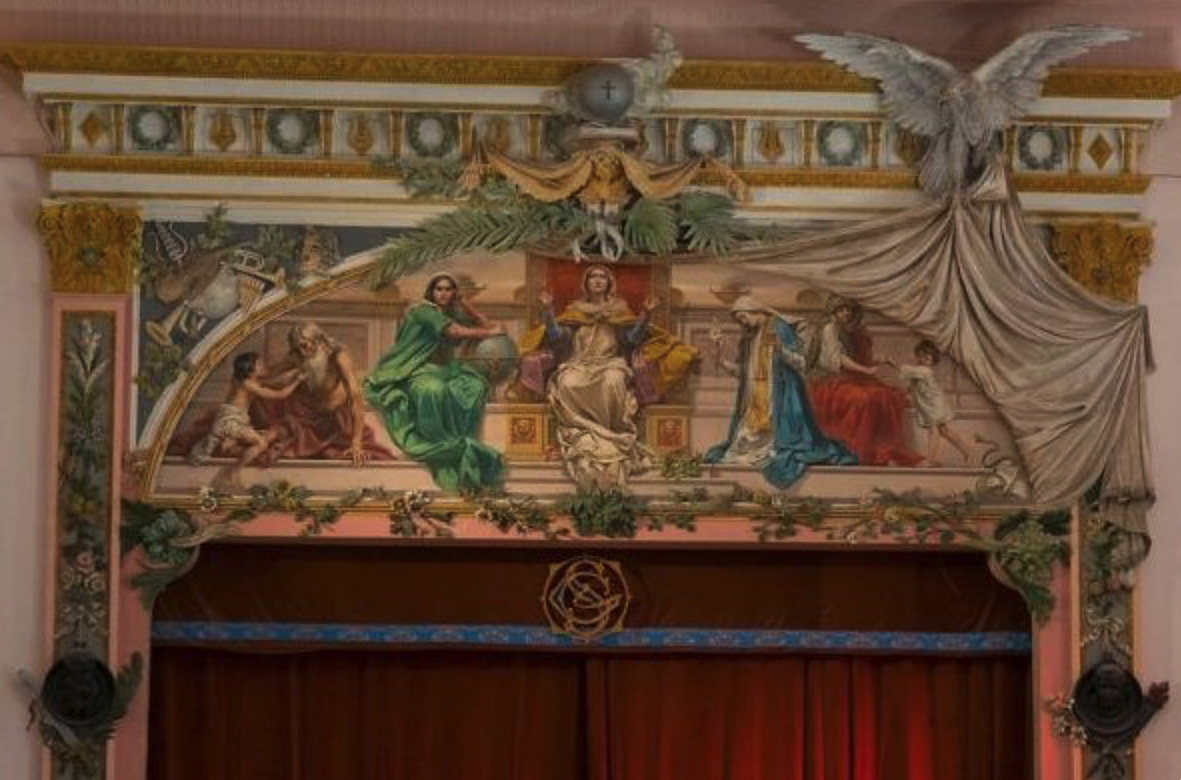
The Virtues of Mankind – portico of the theatre stage in Sliema
Image: tsmalta.com
However, Cali’s most outstanding work is the 1867 oil painting “Death of Dragut”. The painting measuring 225 x 170 cm is exhibited in the “Muse” Museum in Valletta and depicts the death scene of the Turkish general called Dragut during the Great Siege of Malta (Fort Saint Angelo to be exact) in 1565.
Dragut was fatally wounded by the artillery fire aimed at the Turkish positions. Basically, the painting shows Cali’s talent in a nutshell, his masterful painting technique focused on faithful depiction of reality, his knowledge of the anatomy of human body and the theatrical approach showing the seriousness and dynamics of the situation.
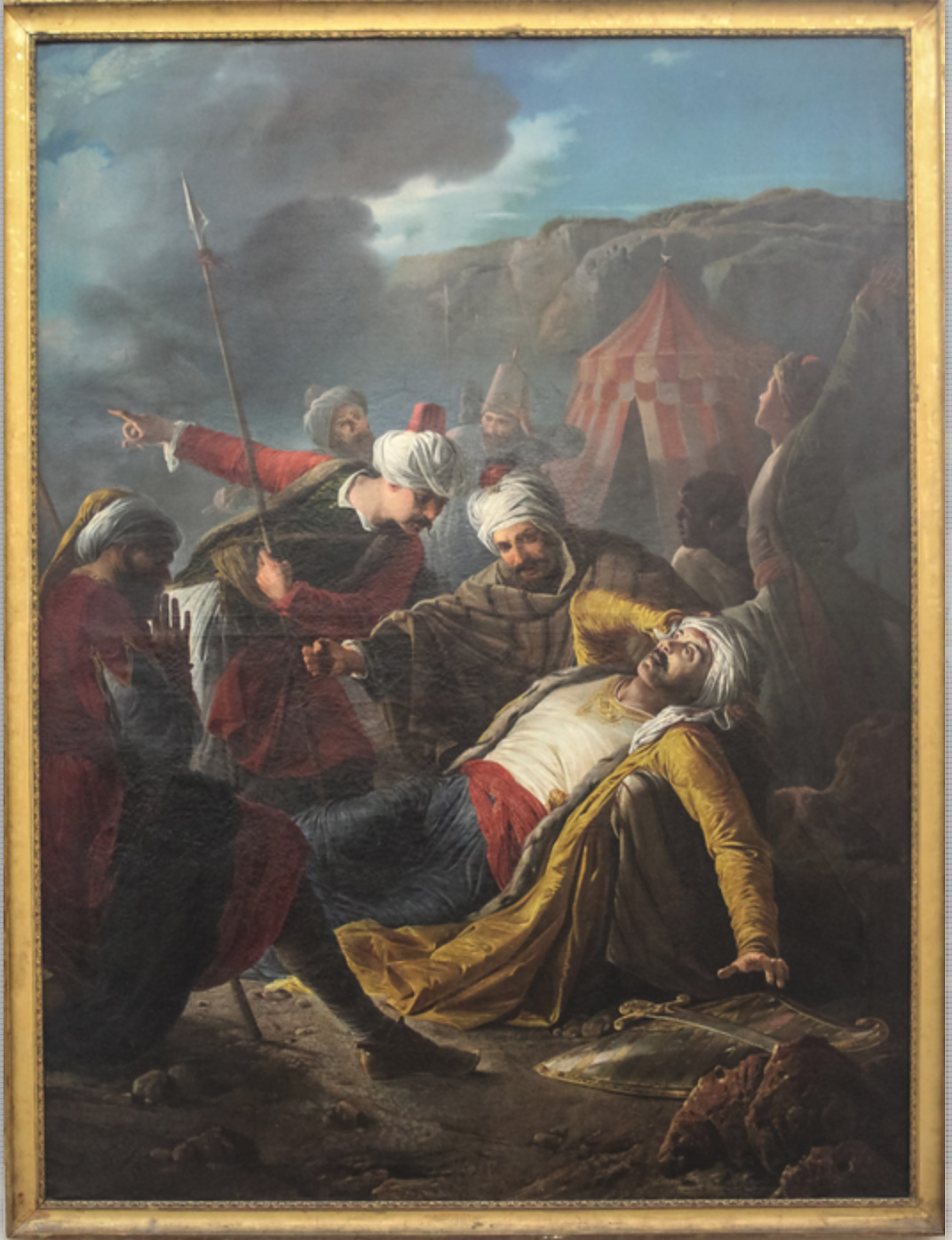
Cali’s painting “Death of Dragut”
Image: useum.org
Other prominent works by Cali include:
1) The altar of St. Jerome and St. Lawrence (oil on canvas 1881) in the parish church of Sacro Cuor, Sliema;
2) Our Lady of the Rosary (his first work) and the Prophets and Episodes from the life of Christ in the parish church in Mosta;
3) St. Dominic altarpiece in the parish church of Porto Salvo, Valletta;
4) Portrait of the merchant Agostino Cassar Torregini;
5) Portrait of Judge Carbone
6) Birth of Jesus Christ in Luqa Parish Church;
7) St. Dominic in Luqa Parish Church;
8) St. Michael in Luqa Parish Church;
9) Sacred Heart of Jesus (destroyed during World War II) in Luqal Parish Church 10) Our Lady of the Rosary in Luqal Parish Church;
11) Saint Paul and Saint Catherine V.M. in Luqal Parish Church;
12) Apotheosis of St. Francis, church of S. Francesco, Valletta;
13) The Sacred Heart of Jesus, Fontana parish church, Fontana, Gozo;
14) The Assumption of the Virgin Mary in the church of Qrendi;
15) St. Lawrence Martyr, San Lawrenz parish, Gozo;
16) Main altars and chapels in the aisles in St. Joseph, St. Helen Basilica, Birkirkara
The analysis of the ornamentation shows that when creating the wall paintings, Cali drew from French, German and Italian Renaissance, which constituted a “decorative base”. It is further evidenced by the arabesques and grotesques which dominate the polychrome paintings present in the Villa.
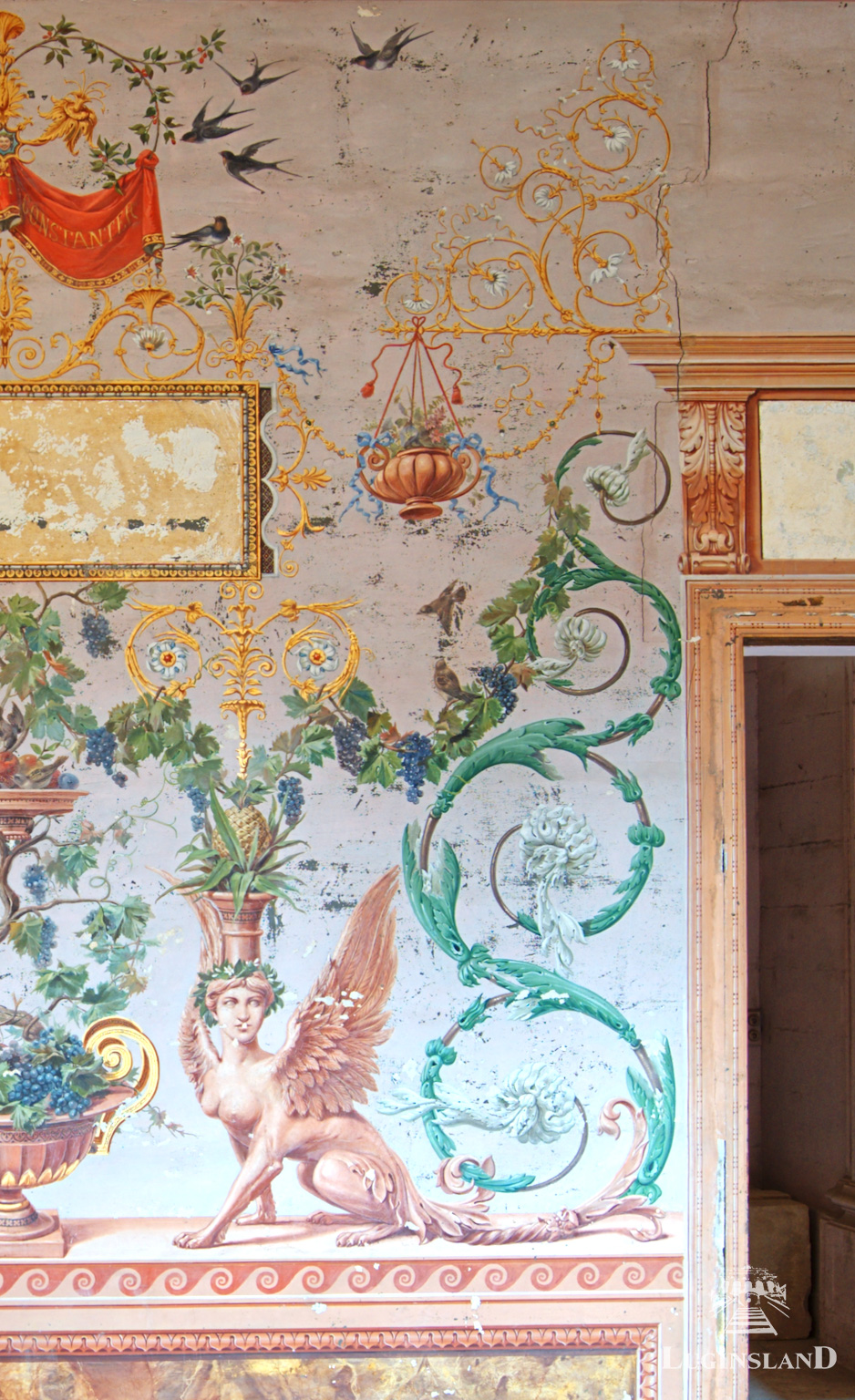
Image: ®Luginsland Limited
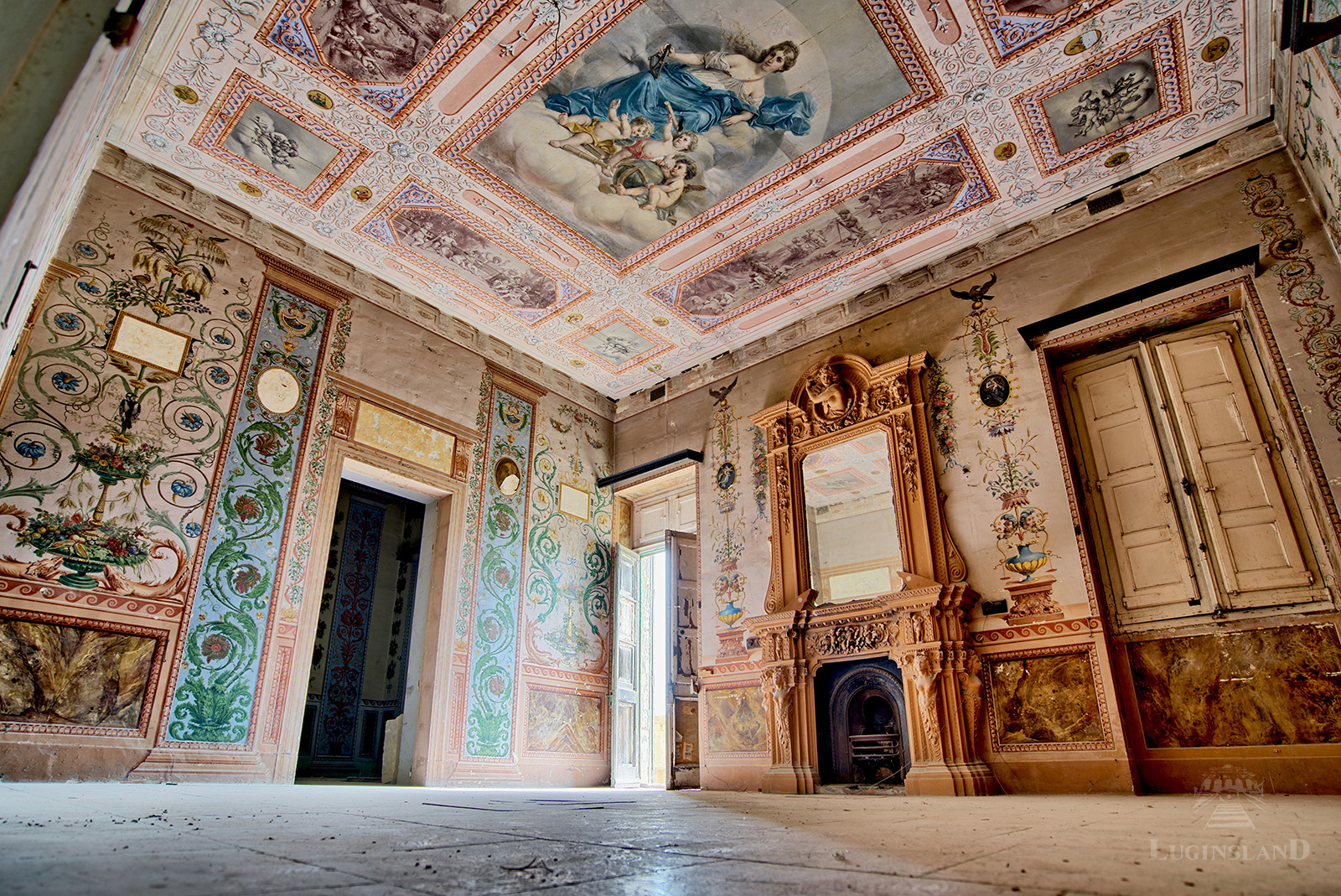
Main Lounge – Villa Luginsland
Image: ®Luginsland Limited
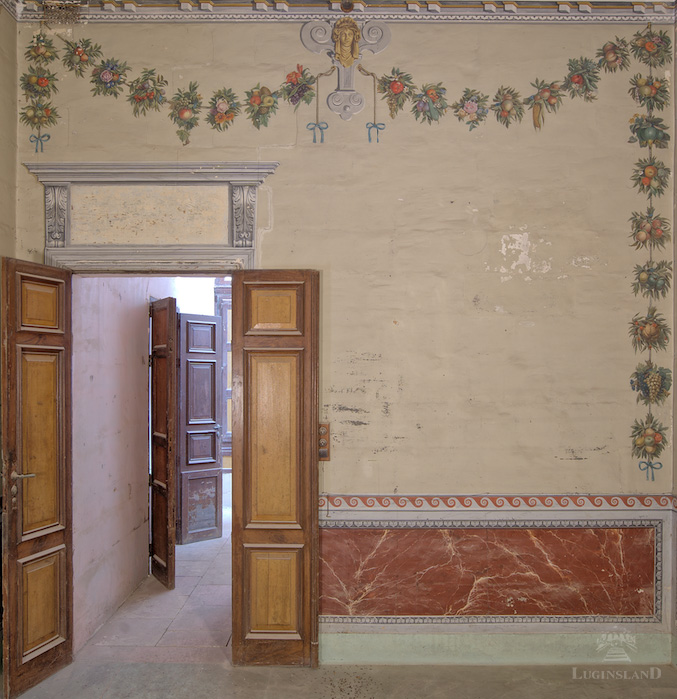
Main Lounge – Villa Luginsland
Image: ®Luginsland Limited

